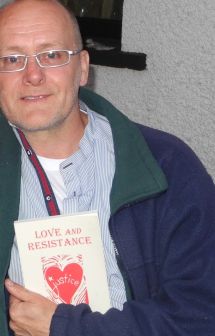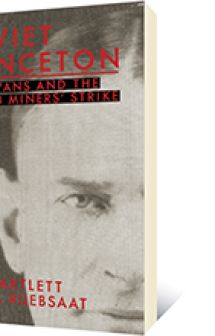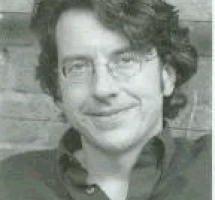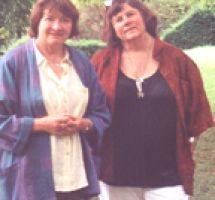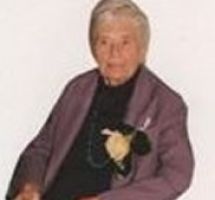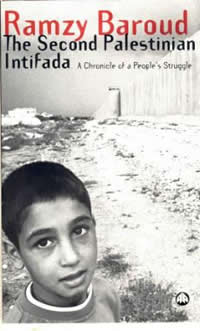
This book fulfills its title´s promise; it is an informative, engrossing, readable and moving history; a chronicle in the best sense of a period and place for which we have had little news or analysis that is not filtered by the aggressors of Palestine and their friends worldwide.
In their foreword, Kathleen and Bill Christison write that, “The Palestinian—Israeli conflict has gone beyond being a mere political problem, beyond the stuff of cool debate. It is a human disaster that can no longer be treated with dispassion… The Israeli appropriation of the Palestinians´ land, livelihood and very existence is terrorist violence, as surely as any suicide bomber is terrorism…In the international media coverage of the two sides, only Israel´s story is told, so that the Palestinian violence has no context or reason…”
Baroud provides the context and the reason in a tale of courage, endurance and betrayal. He covers the events with a deeply personal interest and a keenly informed eye. If his story is not detailed enough, check out Appendix 1 of deaths and losses in 2000—2005, Appendix 11, a chronology of events during that period and Appendix 111, his exhaustive notes, references and recommended reading. But the main body of the book is rich with specific descriptions and detailed background of his story of struggle.
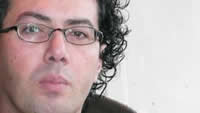
Photo © Theresa Wolfwood.
The author grew up in a refugee camp in Gaza with resistance in his blood. His grandfather, exiled in the Nakba of 1948 to the camp in Gaza, waited in vain for forty years for the moment when he could return to his village. Baroud was a teenager during the first Uprising in 1987 when ordinary Palestinians went into the streets to confront the Israeli army; many of his family and friends died in that uprising. He lived near what was called Red Square, ”there many of my peers fell to a cruel fate, the trails of their blood leaving stains that would last forever.” He wrote poetry that was published on the walls of the refugee camps of Gaza.
The Second Uprising began when he was studying in the USA; there he saw the power of a totally biased international media. “Palestinians were duly blamed and condemned. Venomous speech was spat out everywhere and by every media, reducing the Palestinians to the role designated to them by the official Israeli account — they were the wrongdoers, innately violent, politically conniving and manipulative, twisted and essentially terrorist.”
So the author, a writer, journalist, and editor of www.palestinechronicle.com, now based in the USA, felt it was essential to respond this global propaganda and to write this book which he hoped would present the Palestinian response in the context of decades of oppression and “to articulate a independent Palestinian view that holds no allegiance to any political party, individual, or official entity of any sort. In this it is simply an attempt to cling to the same principles espoused by countless refugees in small and over—crowded refugee camps where freedom is proudly cherished over life.”
The Second Uprising may have had its origins in Israel reaction to its unacknowledged defeat in Lebanon in 2000. Then the Israelis built up its military aggression in Palestine, with fortified settlements and attacks of incredible intensity on civilians and their homes in refugee camps. “Three months after the outbreak of the Intifada, Israel began using illegal and unknown chemical agents [intimations of Gaza 2008] against Palestinians.” Appeals to the outside world were as usual unheeded as the camp was bulldozed. “The collective efforts of dedicated soldiers and settlers succeeded in obliterating an entire neighbourhood. But in the midst of the ruins, a solitary wall remained standing, covered with graffiti and images drawn with the colours of the Palestinian flag. There was a picture of a fist, breaking chains and bursting out of the ground. The trunk of the tree had the shape of the face of a little boy, and the roots were human hands holding tight to the soil. And below, a short statement in Arabic read “like the trees we die standing.” ”
Israel also launched a fierce assassination policy against anyone suspected of political activity and leadership. But as Baroud writes, as many died, more leaders were born. At the same time the world was watching the trial of Milosovic for war crimes, Ariel Sharon was never charged with his war crimes and his “audacious mandate of institutionalized violence.” The comparison is a good one.
In 2003, Baroud writes, the Palestinians declared a ceasefire of their response to the escalation of Israeli aggression, perhaps in hopes that the international community might show some support. But the Israelis continued their attacks and the Palestinians responded with more violence. Rachael Corrie was killed by a bulldozer while participating in non—violent resistance to the destruction of a Palestinian home. Baroud suffered the loss of two cousins in Burej, Gaza during a religious celebration. And Palestinian politicians had their own internal disagreements and they also faced accusations of corruption. Their own leaders were willing to compromise repeatedly the integrity of Palestinian cause and people.
Baroud does not intend to propagate the idea of violent resistance, he wants to reconstruct, if briefly, the argument that the Palestinian people´s struggle, including their armed struggle in the occupied Territories, is defended and protected under international law, In fact, “all States [are encouraged] to provide material and moral assistance to the national liberation movements in colonial territories.” Baroud uses the brutal attack on Jenin refugee camp as an example of Israel´s aggression, but reminds us that some did label this state—terrorism, but criticism was ignored by Israel and the USA (and their media).
However, Baroud does not accept the idea of Palestinians resorting to “morally degrading acts equivalent to those advocated by the Israeli government…To maintain its moral edge, the Palestinian revolution should not depart from its all—encompassing, tolerant and inclusive path.”
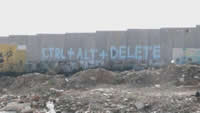
The wall near Jerusalem creatively decorated. Photo © Theresa Wolfwood.
By 2004, the wall had cut off Palestinians from Palestinians and Palestinian lands from their owners. The political landscape changed with assassinations of Palestinian leaders and the death of Arafat. Baroud pays tribute to the solidarity and dignified kindness of the French government during the time of Arafat´s death and funeral. But one hears little from today´s French government — times have changed quickly.
The “Separation” Wall was another of Sharon´s dreams to see reality even though the International Court of Justice ruled it was illegal — it still stands and now in 2009 it continues to be constructed on the ruins of villages and fields every day. Israel intensified its attacks on homes and people in Rafah, Gaza, even as UN officials were present assessing the damage there. While recounting details of this and other attacks, Baroud asks “What must Palestinians do to stand up against the Israeli occupation without being blamed for their own misery…?”
By 2005, he says, the Uprising was at an impasse, little in the way of freedom or justice had been realized. Israel continued and continues on its own path of destruction and warfare. And Israel, thanks to the UK (it provided the essential heavy water), has joined the nuclear club. And although we hear much about Iran and North Korea having the bomb, there is little objection to Israel´s possession of the ultimate weapon.
A few settlements were dismantled; more were and are being constructed in the West Bank. “Israel was leaving Gaza in order to retain large chunks of the West Bank” quoted from the Jerusalem Post. Any idea of free movement between parts of the ever diminishing fragmented Palestine were dashed. A look at current maps of Palestine show that it is nearly impossible to create a viable state with any independence of movement with the borders defined by the Wall. And the maritime blockade of Gaza stops even fishermen from making a safe livelihood.
Baroud has given us an excellent history of a situation we know only one side of — and even solidarity activists rarely have access to the careful documentation and accumulation of facts in context that Baroud has compiled. Our solidarity is well informed by this important book; invaluable and essential for our understanding and our campaign work. Baroud´s next book, My Father Was a Freedom Fighter: Gaza´s Untold Story will be available later in 2009.
In the epilogue, Baroud states, “…peace and justice movements around the world, representing an array of struggles, continue to look to the Palestinian people as an icon of resistance…no other national struggle in the world has come to symbolize so many things to so many different people….Palestine itself lingers in the world´s consciousness merely as a symbol…”
But Palestine is a reality, part of our fragile world, he warns, “If Palestine continues to be understood — or misunderstood— outside its proper frame as a national struggle for rights within the appropriately corresponding international context, than little can be expected from any attempts to remedy its ailments.”
He ends with what solidarity activists everywhere must take to heart; the struggle continues within Palestine, “…the Palestinian resistance, which has for the most part taken the form of a non—violent and popular movement, will continue as long as the circumstances that contributed to its commencement remain in place.” For the millions of Palestinians inside and outside the occupied territory, the struggle does not end. Nor, if we are sincere in our words, should our solidarity.

 Follow
Follow

